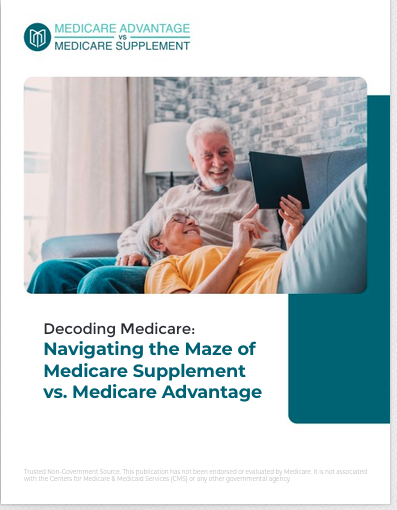Key Takeaways:
- Timing is everything with Medicare enrollment – miss your window, and you might face lifelong penalties or delayed coverage.
- Different enrollment periods offer unique options for signing up or making changes, depending on your age and situation.
Medicare Enrollment Periods: Mapping Out Your Options
Medicare enrollment can be confusing, but getting familiar with each period on the Medicare calendar can make it easier to figure out what’s right for you. Here, I’ll break down each enrollment period and what it means for your coverage. Knowing when and how to enroll can help you avoid costly penalties and ensure you get the coverage you need when you need it.
Initial Enrollment Period (IEP): The Best Time to Start
The Initial Enrollment Period is the first window you have to enroll in Medicare. This period lasts seven months, surrounding your 65th birthday: three months before, your birth month, and three months after. This is usually the smoothest and most straightforward time to enroll, so you can avoid any late fees or delayed coverage.
- When it Happens: Three months before you turn 65, your birth month, and three months afterward.
- What to Do: This is the best time to enroll in Medicare Parts A and B to ensure you’re covered right as you turn 65.
- Why It Matters: Enrolling during your IEP can prevent lifetime penalties and delays. Waiting until after this window can result in late enrollment penalties that stick with you for life, especially for Part B and Part D (prescription drugs).
General Enrollment Period (GEP): A Backup for Missed Deadlines
If you missed enrolling during your Initial Enrollment Period, Medicare offers a General Enrollment Period each year from January 1 to March 31. This can be a valuable backup option, but there are some limitations.
- When It Happens: Every year from January 1 to March 31.
- What to Do: Use this period to sign up for Medicare Parts A and B if you missed your initial window.
- Why It Matters: Keep in mind that if you enroll during the GEP, your coverage won’t start until July 1 of that year, which could leave a gap in your healthcare coverage if you’re not careful. Also, late enrollment penalties may apply, increasing your monthly premiums for Part B and Part D permanently.
Annual Enrollment Period (AEP): Your Yearly Check-Up
The Annual Enrollment Period is your chance to make changes to your Medicare plan if you’re already enrolled. This period, sometimes called the “Open Enrollment Period,” runs from October 15 to December 7 each year.
- When It Happens: Every year from October 15 to December 7.
- What to Do: This period allows you to switch Medicare Advantage plans, change Part D plans, or return to Original Medicare if you’re already in a Medicare Advantage plan.
- Why It Matters: The AEP is a great opportunity to review your coverage and make sure it still fits your health needs, especially if your health has changed, your medications have shifted, or you anticipate needing different kinds of care.
Medicare Advantage Open Enrollment Period (MA OEP): A Limited Switch for Advantage Members
The Medicare Advantage Open Enrollment Period is specifically for those already enrolled in a Medicare Advantage plan. This period lasts from January 1 to March 31 each year, and it allows you one change – either to switch to a different Medicare Advantage plan or to return to Original Medicare.
- When It Happens: Annually from January 1 to March 31.
- What to Do: This period is strictly for making adjustments within Medicare Advantage or moving back to Original Medicare.
- Why It Matters: Unlike the AEP, this period only lets you make one change. It’s ideal if you realize early in the year that your plan isn’t working for you and you want to adjust without waiting for the next Annual Enrollment Period.
Special Enrollment Periods (SEP): Flexibility for Life’s Changes
Special Enrollment Periods (SEP) are triggered by specific life events that might affect your Medicare coverage, such as moving to a new area, losing employer-based insurance, or becoming eligible for Medicaid.
- When It Happens: SEPs are based on qualifying life events, so the timing depends on your circumstances.
- What to Do: If you experience a qualifying event, you can use the SEP to join or switch Medicare plans outside the usual enrollment periods.
- Why It Matters: SEPs are particularly helpful if your situation changes unexpectedly. Using an SEP lets you maintain coverage without waiting for the next open enrollment period, which could be crucial in a time of transition.
Late Enrollment Penalties: Why Timing Really Matters
Missing your Initial Enrollment Period (IEP) or any enrollment period can lead to penalties, especially for Parts B and D. These penalties are meant to encourage timely enrollment but can add up over time.
- Part B Penalty: If you delay enrolling in Part B, you’ll pay a 10% premium penalty for each 12-month period you were eligible but didn’t enroll. This penalty sticks with you for life.
- Part D Penalty: Delaying enrollment in Part D also comes with a penalty. For each month you delay, you’ll pay an extra 1% of the “national base beneficiary premium” on top of your regular premium. This amount changes each year and remains for as long as you have Part D.
How to Decide When to Enroll: A Step-by-Step Calendar
Choosing when to enroll in Medicare depends on factors like your age, work status, and existing health insurance. Here’s a step-by-step timeline to guide your decision:
- 3-6 Months Before Turning 65: Check your eligibility for Medicare, especially if you’re receiving Social Security benefits, as enrollment might be automatic.
- During Your IEP (3 Months Before You Turn 65): Enroll in Medicare Parts A and B. Start looking at Part D (prescription drug coverage) or Medicare Advantage if you want additional coverage.
- Annually from October 15 to December 7: During the Annual Enrollment Period, evaluate your current plan. This is your chance to make adjustments if you need a change in coverage.
- If You Missed Enrollment: Use the General Enrollment Period from January 1 to March 31 to avoid further penalties.
Enrollment Tips: Making Medicare Enrollment Hassle-Free
Medicare enrollment doesn’t have to be stressful. Here are some tips to make sure your experience is as smooth as possible:
- Mark Key Dates on Your Calendar: Keeping track of important enrollment periods can help you stay on top of your options and avoid penalties.
- Consider Your Current Coverage: If you’re working past 65, see how your employer’s insurance works with Medicare. You may be eligible for an SEP when your work-based coverage ends.
- Use Online Resources: Medicare.gov has tools to help you compare plans and costs based on your location, health needs, and prescriptions.
- Set Reminders for the Annual Enrollment Period: Even if you’re satisfied with your plan, it’s a good idea to review it annually. Plan changes in cost and coverage are common.
The Bottom Line: Making the Right Medicare Move
Navigating Medicare enrollment periods doesn’t have to be overwhelming. Whether you’re just turning 65 or looking to make changes, knowing the ins and outs of each enrollment period can help you maximize your benefits and avoid costly missteps. Mark your calendar, check your current coverage, and stay informed about your options. By staying proactive, you’ll be set up for a Medicare plan that fits your needs.









